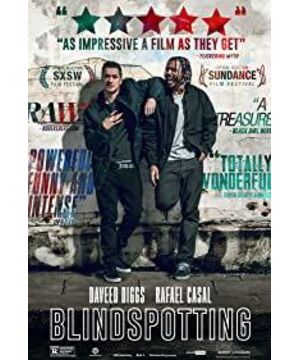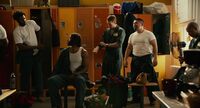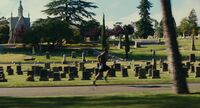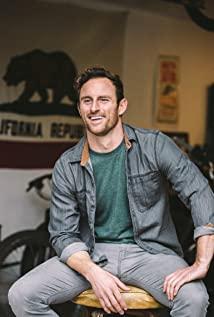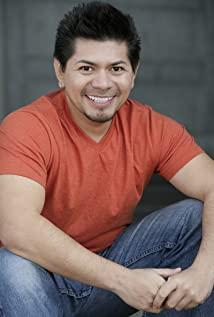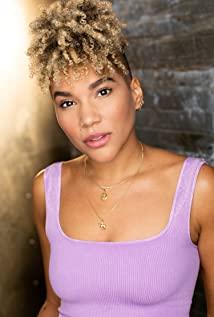Niggas With Attitude
In the early morning of November 11, in a bar in the suburbs of Chicago, a black security guard subdued a bar attacker, but he was shot and killed by the police;
One day in September, a female police officer in the United States walked into the room of the black house owner by mistake when she came home from get off work. The black house owner flew into the accident and was shot and killed by the other side.
According to crime report statistics, in the United States, although black people make up only 12% of the population, black people account for 40% of the victims of police shootings.
The number of black people shot by police is even between 2.5 and 3 times that of white people.
In the movie [Blind Spot] , a core event that runs through the entire film is that the male protagonist who has just been paroled witnessed a black man who was shot and killed by the police several times while escaping.
This event kept appearing in his sleep, and the effects began to show:
His relationship with his only white friend began to change, and he began to reflect on the way he used to live on the streets.
The two leading actors and screenwriters of [Blind Spot] are rappers by their profession, so their lines are full of hip-hop elements, laughing and cursing, which are all resistance to life.
After last year's [Get Out], black comedy has ushered in a wave of spring, and this year's [BlacKkKlansman] , [Sorry to interrupt] and this [Blind Spot] are all of high quality.
Although it is a comedy shell, it seems that there is not much bitterness and hatred, but inside it is full of laughter and tears.
Rome was not built in a day, and the long-standing issue of white police violence against black people is not a simple problem that arises at the moment.
Black culture worldwide is often known as street culture.
Hip-hop, hip-hop, graffiti, street basketball, etc. Street culture is also a community culture .
The background of the story in the movies [Blind Spot] and [Sorry to Excuse Me] both chose the city of Auckland.
Oakland, California, in fact, the "Black Panther Party" that advocated violent protests started here.
In last year's top ten worst cities in the United States, Oakland on the west coast ranked second.
Oakland's black population accounts for more than 45% and whites only 40%. There are many black communities here.
For example, in [Blind Spot], in the community where the two male protagonists, one black and one white, are located, the majority of black people are black people. The people they deal with on a daily basis are black people, and the center of their lives is black people.
The white brothers living in it have to learn the way of speaking and dressing of black people to integrate into the black community.
Including [Moonlight] who won the Oscar for best picture , you will find that this is an all-African world .
Almost all characters are black, almost all stories revolve around black people, and the black world is self-contained and logical.
This is not impossible in reality.
Someone who has been in the United States may find that, for example, a white company is almost entirely white, and the company next to it just a block away may be entirely black.
The area next to the black community may have neat roads, nice lawns, and spacious homes, but the black community just a block away has only dirty streets and huts.
For example, the birthplace of hip-hop culture used to be the Bronx in New York, Compton in California, Detroit, a declining city, and the famous Harlem in New York.
Without exception, they were once black ghettos struggling in the quagmire of poverty and crime.
High unemployment, drugs, gangs, guns, violence, all kinds of crime and policing problems are entrenched and complicated here.
In the movie [Rush Out of Compton] , Compton, a deserted industrial city in the 1970s, is the protagonist.
The early famous hip-hop music group NWA came from here, and they created a new form called "gangsta rap".
The so-called "gang rap" is nothing but a powerless struggle against this quagmire life.
Against the backdrop of numerous gangs and street violence, even ordinary black people walking on the road could not be guaranteed to be stopped by the police at any time for lectures.
In the movie, a high school student will be searched by the police when he walks home, and he will be pressed to the ground while standing on the street to eat.
Even though NWA has already made a name for itself, after coming out of the recording studio in the white area, it was almost arrested by the police because of the color of the skin.
Many ordinary black groups are threatened by gang violence on the one hand, and prejudiced and humiliated by the police at any time on the other hand.
In the movie [Boys on the Block] , a black teenager born here walks a hard-working road alone, only to be killed by gunfire in an inevitable riot.
Almost made a footnote to their fate.
A century ago, the American South had long practiced the famous "separate but equal" policy.
Beginning with railroad traffic, they provided equal but segregated carriages for whites and people of color, or separated by baffles in passenger carriages.
Later, other means of transportation, schools, bars and other public places followed suit, and in this way black people were fixed as second-class citizens and kept away from the white world.
Decades later, after a long struggle, "separation but equality" was cancelled, but it was not really dead.
Isn't the formation of the black community exactly this way of thinking?
Before and after the two world wars, southern black groups began to move to northern cities to seek opportunities.
Economically developed urban centers such as the Watts District in Los Angeles, Harlem in New York, and the South Side of Chicago are their initial targets.
But at the same time that blacks flocked, those white families who originally lived, along with the industrial and commercial circles, began to move to the suburbs of the city.
This formed the pattern of urban black settlements and suburban middle-class white families.
The US government shoulders an inescapable responsibility for the deteriorating environment in black neighborhoods.
In the "Roosevelt New Deal" in the 1930s, the government invested a lot of housing loan programs, such as HOLC, FHA programs, etc.
They injected millions of loans into the housing industry, fueling the rapid growth of whites in the suburban housing industry.
However, these loan programs all closed the door to blacks.
The black people who went north were crowded into specific areas of the city, but they were all classified as dangerous areas. They could not get loans and could only live in rented houses.
The "urban renewal movement" that began in the late 1940s drove them from urban areas to more remote low-income residential areas.
In Atlanta, evicted blacks moved west and southeast, which were already overcrowded.
Negroes lived in crowded and dilapidated housing, and white neighborhoods were closed to them, making ghettos four times as crowded as white neighborhoods.
But even so, before the 1960s, although poor, most black people still had fixed blue-collar jobs, poor but happy.
And with the subsequent planning of the FHA, with the hollowing out of the manufacturing industry and the massive relocation of the industrial industry since the 1960s, the black people fell into a deeper desperation——
Not only poor, but now there is no job .
Black communities are increasingly becoming equated with ghettoes. In the 1980s, author Nicholas Lyman wrote after examining a black community:
Abandoned parks, shuttered black shops, two of the three movie theaters in the neighborhood closed, and dilapidated scenes everywhere.
It is against this background that drugs, alcohol, and guns began to infiltrate the black community .
Before, the black community meant only poverty, now it means poverty plus chaos.
The intervention of the police became a matter of course.
In the 1980s, after Reagan came to power, he started a strict "war on drugs", and the black community was the key target.
Historically, the "drug war" has actually been one of the political tactics used by American politicians to clean up immigrants.
The clean-up of the drug "Crack" that began in the 1980s was largely a targeted clean-up of "black trash".
The media focused on hyping its seriousness. The police severely punished the black community, and all those who were slightly related to it were thrown into prison and sentenced to execution.
According to a statistic, less than 13% of black people actually smoked "crack", but the proportion of black inmates who were thrown into prison reached 90%.
The story of the hip-hop group in [Rush Out of Compton] takes place in the context of this era.
We were afraid of the special equipment and tactical teams of the police department, and when we encountered the police before, we had no choice but to run away.
They said so in subsequent interviews.
Therefore, their form of resistance can only be hip-hop music, and a "FUCK THE POLICE" that no one dares to say is the famous song of NWA.
I'm not pleasing to the eye just because I'm young / A piece of paper, a little power / You can search my car and find my goods / Do you think every black man is dealing drugs?
They call their group "Niggas With Attitude" and their music "Reality Rap".
The song was boycotted by radio and responded to by the FBI in person, but it sold more than 100 million copies.
The defiance in it is self-evident.
It does call out the emotions of every young boy living in the black community: pain, anger, powerlessness .
Recalling Detroit in 1967, white police officers sneaked into bar parties and forcibly arrested black people, triggering a 5-day-long Detroit riot.
In Kathryn Bigelow's [Detroit] , several police officers rushed into a hotel to investigate a gun, used violence, intimidation, intimidation against black residents, and eventually killed three black people.
That's what happened in the Detroit riots.
What is even more shocking is that the film is completely faithful to history. A black man who survived that night later lived in isolation and never had contact with the white community in his life.
In Los Angeles in 1992, four white police officers chased a black man who was speeding on a motorcycle, stopped him and beat him to death, but none of the four police officers were sentenced.
The anger burned throughout the United States, and this incident also triggered one of the most significant racial riots in Los Angeles in the last century.
But until now, the same thing is still happening every year.
What can they do? What can they do?
In [Blind Spot], the black male protagonist just poured out all the pain with the angry hip-hop of the white police.
-
Author / Curly Hair
The article was first published on the WeChat public account "Bao Ci Er"
View more about Blindspotting reviews


